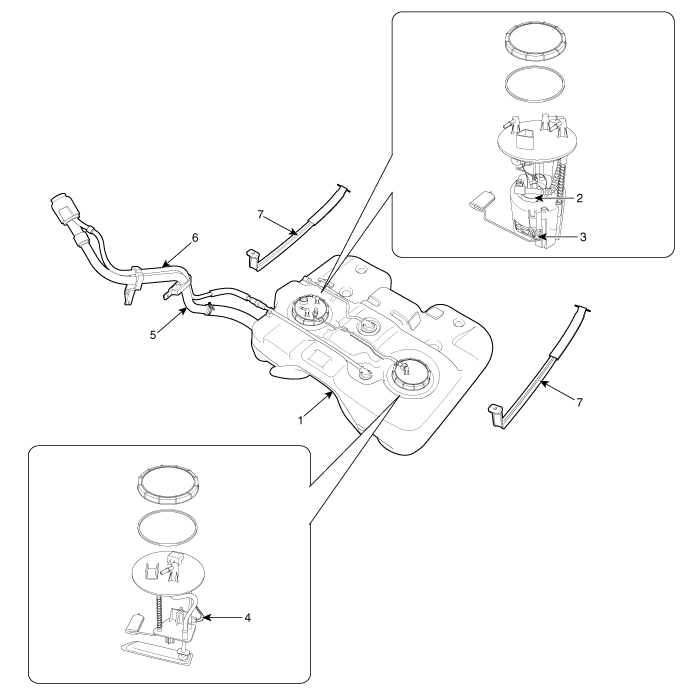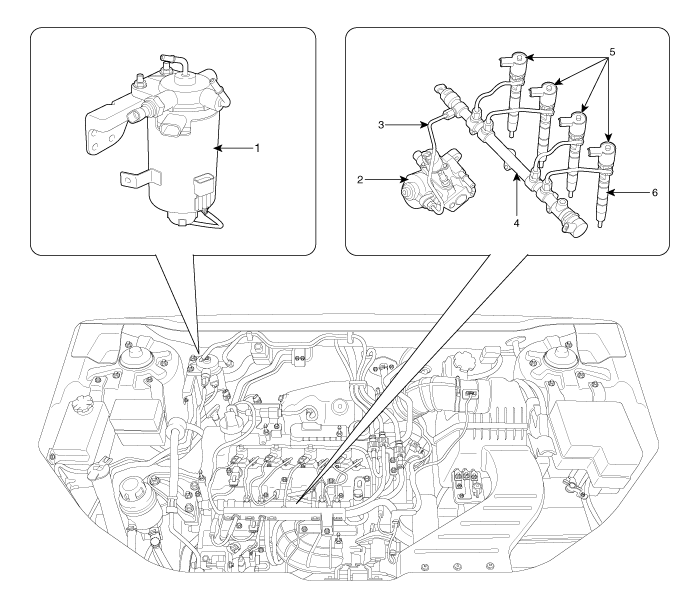

1. Fuel Tank 2. Fuel Pump (Low Pressure) 3. Fuel Sender 4. Sub Fuel Sender | 5. Fuel Filler Pipe 6. Leveling hose 7. Fuel Tank Band |

1. Fuel Filter 2. High Pressure Fuel Pump 3. High Pressure Fuel Pipe (High Pressure Fuel Pump ↔ Common Rail) 4. Common Rail 5. High Pressure Fuel Pipe (Common Rail ↔ Injector) 6. Injector |

1. Fuel Filter 2. High Pressure Fuel Pump 3. High Pressure Fuel Pipe (High Pressure Fuel Pump ↔ Common Rail) 4. Common Rail 5. High Pressure Fuel Pipe (Common Rail ↔ Injector) 6. Injector |

1. High Pressure Fuel Pipe (High Pressure Fuel Pump ↔ Common Rail) 2. High Pressure Fuel Pipe (Common Rail ↔ Injector) 3. Fuel Feed Tube (Fuel Filter ↔ High Pressure Fuel Pump) 4. Fuel Return Tube (High Pressure Fuel Pump ↔ Fuel Tank) 5. Fuel Return Tube (Common Rail ↔ Fuel Tank) 6. Fuel Return Tube (Injector ↔ Fuel Filter) |
Common Rail Fuel Injection System operates with extremely high pressure [approximately 1,600 bar (160 MPa / 23,206 psi)], so never perform any work on injection system with engine running or within 30 seconds after the engine stops.
Keep cleanly the parts and the working area.
Pay attention to a foreign substance.
Just before installing injector, tube or hose, remove the protect-cap attached on them.
Do not remove injector except for special case.
When installing Injector
Wash the contact area of the injector and replace the washer (gasket) with a new one.
Spread oil on the injector O-ring.
To protect damage caused by shock, vertically insert the injector into the cylinder head.
When installing High Pressure Fuel Pipe
Do not use again the used high pressure fuel pipe.
Install the flange nut correctly.